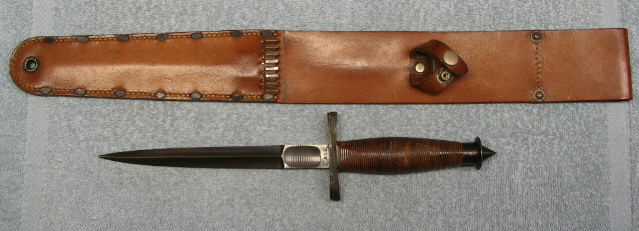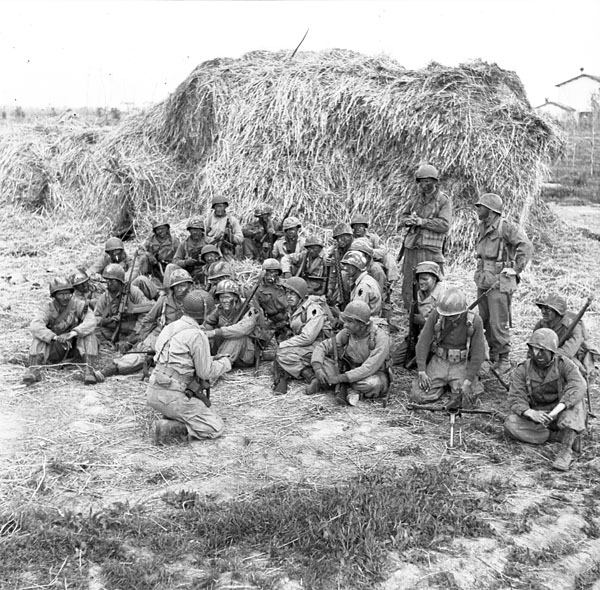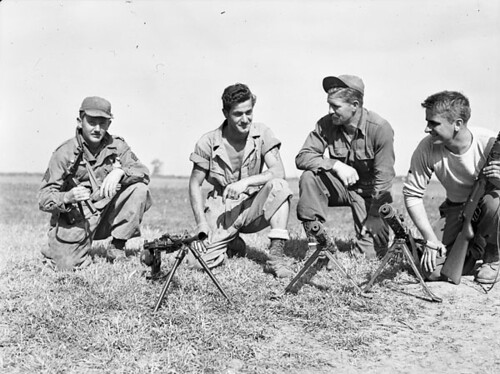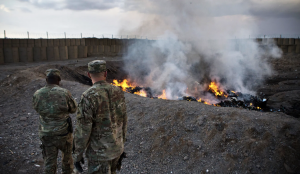Apparently, it became a trend among 20th century German soldiers to refer to many of our Special Operations units as “devils.” But when considering the First Special Service Force–soon to be known as the Devil’s Brigade–the German’s lack of originality can be excused. Officially activated in the summer of 1942, many modern-day Special Operations units in both Canada and America trace their history back to the Devil’s Brigade. They are truly one of the foundational units for modern SOF tactics and training, and were the forerunners of operators today.
Inspired by an ambitious and unorthodox plan from British war strategist Geoffrey Pyke, the training for the First Special Service Force (or the Force, as its members called themselves) was originally intended to accomplish Project Plough: a daring insurgency via airdrop behind German-held lines into Norway to demolish and sabotage critical energy producing infrastructure, and disable the German war machine at its source. To this end, a group of American and Canadian commandos assembled in Helena, Montana for some of the most intense training conducted to date.
In just twelve months, the men of the First Special Service Force went through a grueling regimen in order to survive in the conditions behind the enemy lines of Norway. Within two days of their arrival in Helena, all the commandos began parachuting –and for the majority, this was their first jump ever. Alongside parachuting, members of the Force went through extensive weapons training, learning how to disassemble and use every enemy weapon they might encounter. Members of the Force were extensively trained in covert operations, demolitions, strategic thinking, small-unit tactics, extreme cold climate acquisition, amphibious assault, and mountain warfare. In fact, they trained their skiing to the level of Norwegian army standards. Even their hand to hand and knife fighting instruction was handled by a well-known Shanghai international police officer and martial arts expert, which probably explains why the Devil’s Brigade became so adept and fond of close combat. They even designed their own knife for their exclusive use.

Now, while Project Plough was abandoned, the Force did not have to wait long to prove how effective and lethal they could be. In October of 1943, Lt. General Mark W. Clark, commander of the U.S. Fifth Army, brought in the Force to join up with the U.S. 36th Infantry Division in Naples, Italy. In their first engagement, they demonstrated their rock-climbing prowess by unexpectedly choosing to ascend a steep mountainous ridge in order to flank and capture Monte la Difensa–a heavily fortified German artillery position that had rebuffed numerous allied attempts. Through January 1944, the Force continued to maneuver through wintery, mountainous conditions to capture two more German artillery bases, and defended them against heavy odds. It wasn’t until February 1944, however, that the Force would earn the title “Black Devils,” and become the Devil’s Brigade.

Arriving outgunned by nearly 2:1 to the Anzio Beachhead, the Force began to conduct psychological warfare to intimidate and deceive the enemy. The leader of the Force, Major Robert T. Frederick, ordered as many empty trucks, tents and infrastructure as possible be positioned with his men to deceive enemy scouts of their numbers. While the 1st and 3rd FSSF Regiments held back an estimated 70,000 Axis troops over 13 kilometers of contested territory, the 1st regiment, reduced to only two companies after the mountainous campaign, began nightly raids into enemy territory. Camouflaging their faces with black boot polish, these members of the Force ambushed German defenses at night, preferring close quartered combat over their fire arms for the sake of stealth. Before leaving, members of the Force would leave their signature “calling cards” upon bodies of the enemy, reading “the worst is yet to come.”
Suffice it to say, the German troops at Anzio were not prepared for these commandos. German troops began to commonly refer to them as the “Black Devils” who “are around us every time we come into line…and we never hear them.” Through the use of their psychological warfare, members of the Devil’s Brigade were known to their enemies as “treacherous, unmerciful and clever,” effectively demoralizing a force nearly twice their size.
Members of the Devil’s Brigade went on to capture Rome and deploy to France to assist in allied efforts. On December 5, 1944, the First Special Service Force was disbanded at Villeneuve-Loubet, France, but this is not where their legacy ends. Many members joined up with Colonel Banks 10th group, or continued operations under the Office of the Strategic Services through its transition into the CIA. Their influence on special operations is vast, and multiple modern-day SOF units trace their beginnings to the men of the Devil’s Brigade.





